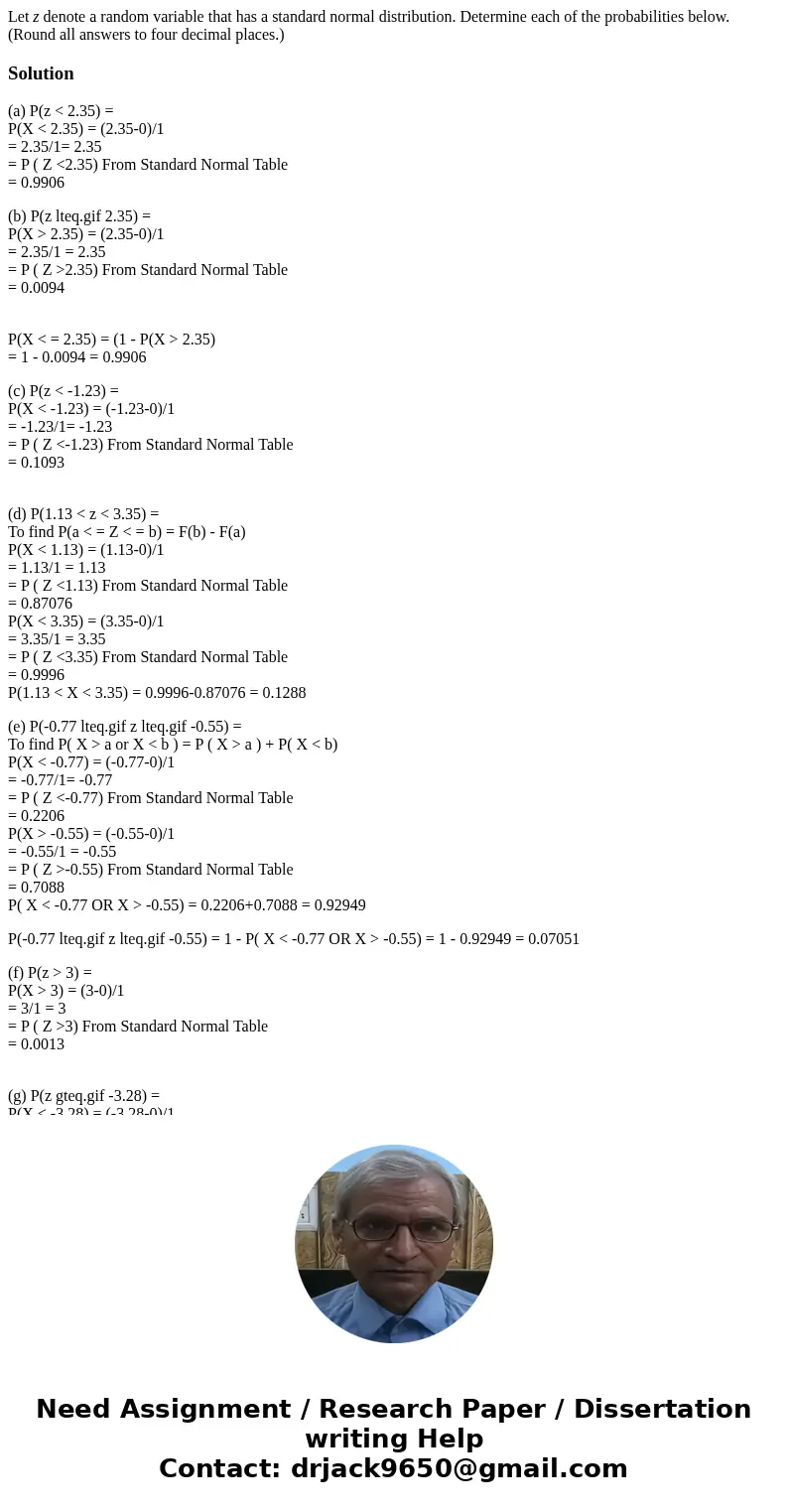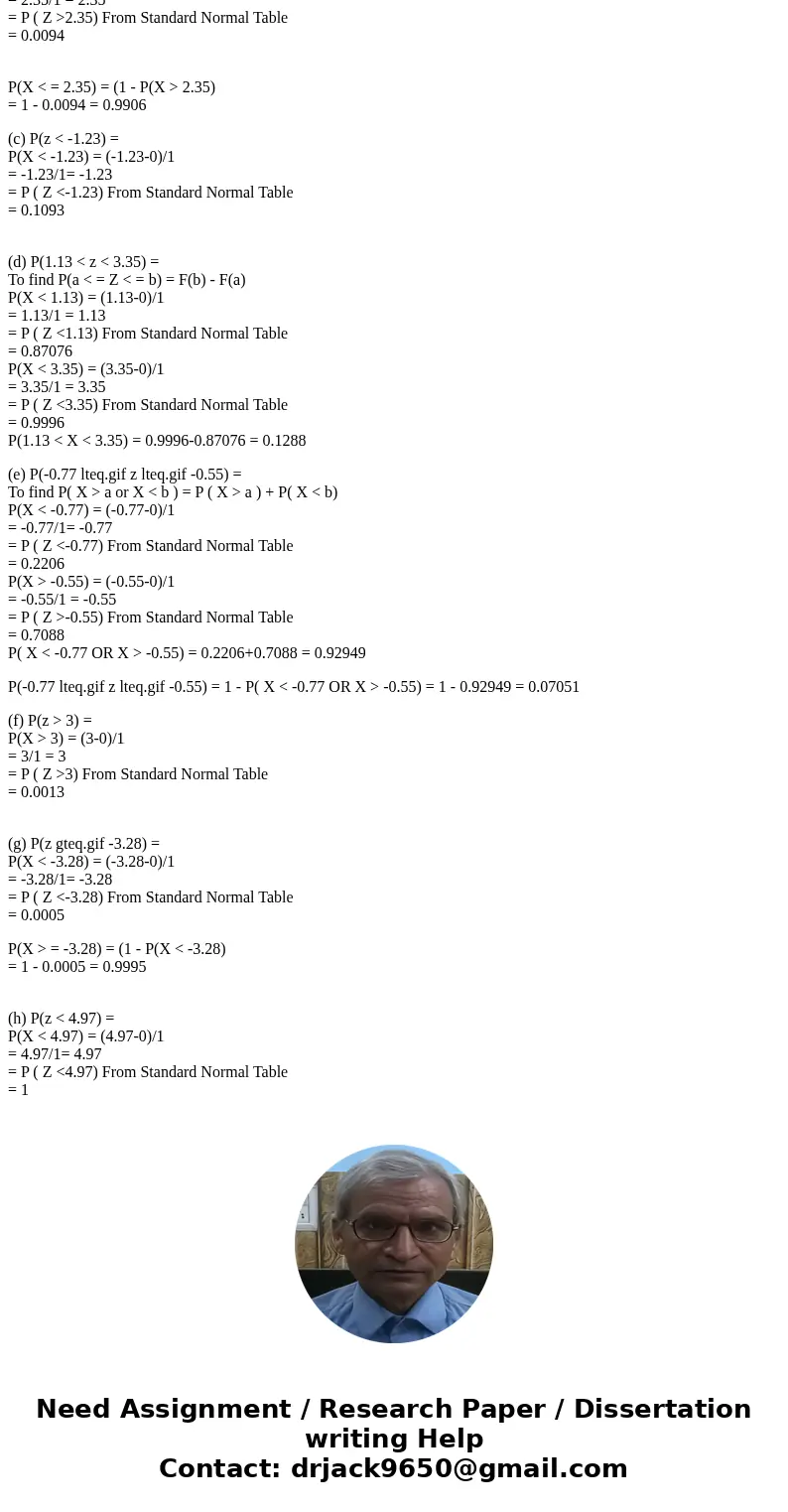Let z denote a random variable that has a standard normal di
Let z denote a random variable that has a standard normal distribution. Determine each of the probabilities below. (Round all answers to four decimal places.)
Solution
(a) P(z < 2.35) =
P(X < 2.35) = (2.35-0)/1
= 2.35/1= 2.35
= P ( Z <2.35) From Standard Normal Table
= 0.9906
(b) P(z lteq.gif 2.35) =
P(X > 2.35) = (2.35-0)/1
= 2.35/1 = 2.35
= P ( Z >2.35) From Standard Normal Table
= 0.0094
P(X < = 2.35) = (1 - P(X > 2.35)
= 1 - 0.0094 = 0.9906
(c) P(z < -1.23) =
P(X < -1.23) = (-1.23-0)/1
= -1.23/1= -1.23
= P ( Z <-1.23) From Standard Normal Table
= 0.1093
(d) P(1.13 < z < 3.35) =
To find P(a < = Z < = b) = F(b) - F(a)
P(X < 1.13) = (1.13-0)/1
= 1.13/1 = 1.13
= P ( Z <1.13) From Standard Normal Table
= 0.87076
P(X < 3.35) = (3.35-0)/1
= 3.35/1 = 3.35
= P ( Z <3.35) From Standard Normal Table
= 0.9996
P(1.13 < X < 3.35) = 0.9996-0.87076 = 0.1288
(e) P(-0.77 lteq.gif z lteq.gif -0.55) =
To find P( X > a or X < b ) = P ( X > a ) + P( X < b)
P(X < -0.77) = (-0.77-0)/1
= -0.77/1= -0.77
= P ( Z <-0.77) From Standard Normal Table
= 0.2206
P(X > -0.55) = (-0.55-0)/1
= -0.55/1 = -0.55
= P ( Z >-0.55) From Standard Normal Table
= 0.7088
P( X < -0.77 OR X > -0.55) = 0.2206+0.7088 = 0.92949
P(-0.77 lteq.gif z lteq.gif -0.55) = 1 - P( X < -0.77 OR X > -0.55) = 1 - 0.92949 = 0.07051
(f) P(z > 3) =
P(X > 3) = (3-0)/1
= 3/1 = 3
= P ( Z >3) From Standard Normal Table
= 0.0013
(g) P(z gteq.gif -3.28) =
P(X < -3.28) = (-3.28-0)/1
= -3.28/1= -3.28
= P ( Z <-3.28) From Standard Normal Table
= 0.0005
P(X > = -3.28) = (1 - P(X < -3.28)
= 1 - 0.0005 = 0.9995
(h) P(z < 4.97) =
P(X < 4.97) = (4.97-0)/1
= 4.97/1= 4.97
= P ( Z <4.97) From Standard Normal Table
= 1


 Homework Sourse
Homework Sourse